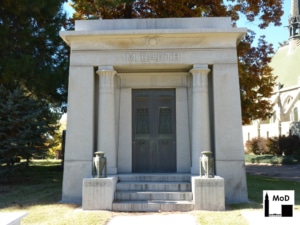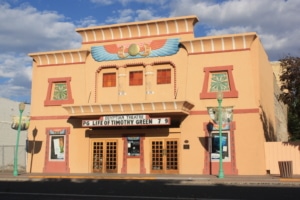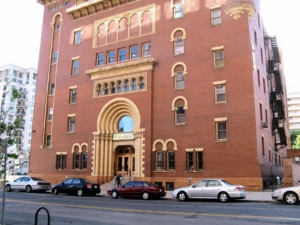DCPA NEWS CENTER
Enjoy the best stories and perspectives from the theatre world today.
Enjoy the best stories and perspectives from the theatre world today.
Hot, hot, hot: Egyptomania was all the rage in the Roaring ’20s when British archaeologist Howard Carter “discovered” the tomb of Tutankhamun in 1922. American audiences breathlessly devoured developments of the excavation, which was documented in detail by newspapers, magazines and movie news-reels. This wasn’t the first time the ancient civilization was front-page news — fascination with “exotic” Egypt also reached fever pitch in the 1800s following the translation of the Rosetta Stone as well as the opening of the Suez Canal in 1869. In the 1920s, obelisks, winged orbs, massive columns and other Egyptian-inspired architectural forms surged in popularity once more, part of a larger “Exotic Revival” that included Asian or Middle Eastern elements. Although remaining examples are rare, here are a few places you can find illustrations of Egyptian Revival in Colorado today.
Barth Mausoleum, Denver

Barth Mausoleum. Photo courtesy of Masonry of Denver
Ancient Egyptian spirituality centered on themes of rebirth and resurrection, and cemeteries were a natural setting for Egyptian funerary styles even before the 1920s revival. One prime example is the final resting place of businessman Moritz Barth in Denver’s Fairmount Cemetery. The German shoemaker-turned-developer became a successful businessman, and once owned downtown’s Barth Hotel. He and his wife Georgia are interred in a mausoleum of light gray granite supported by large columns gathered at top and bottom to resemble sheaves of wheat. The structure is top with a winged sun, the symbol of royalty, the soul, and eternity.
Egyptian Theater, Delta

Photo courtesy of the Egyptian Theater
Opulently themed movie theaters were extremely popular in the early 20th century, and by the 1930s there were more than 100 Egyptian Revival movie palaces across the country. The Holiday Theatre in north Denver opened as the Egyptian in 1914 but has been significantly altered. On the Western Slope in the appropriately named town of Delta, a 425-seat example remains — one of only a handful of Egyptian Revival theaters left in the nation. Opened in 1928, its designer was also behind the design of the Mayan Theatre on South Broadway. You can still catch a movie or other cultural performance at the renovated structure, with its cast-concrete columned facade and elaborate decor including murals and pharaonic light fixtures.
Mosque of the El Jebel Shrine, Denver

Mosque of the El Jebel Shrine
While the domes and arched windows and doors on the exterior of this red brick behemoth at 1770 Sherman are 100% Moorish Revival, the interior of this 1907 building has strong Egyptian (and Persian) influences. Built for the Ancient Order of Nobles of the Mystic Shrine in 1908, its changed hands multiple times (including a failed 2006 development scheme by Donald J. Trump). Currently empty, the shrine is on the National Register of Historic Places and was sold again in 2020. Here’s hoping we can attend its reopening soon.
Gone But Not Forgotten: Mineral Palace, Pueblo
Designed at the height of the Gilded Age, this over-the-top structure featured architectural staples of ancient Egyptian temples including giant columns and towering jewel-encrusted statues. All that remains today is a park with a small lake, but History Colorado tells the palace’s fascinating story here.
